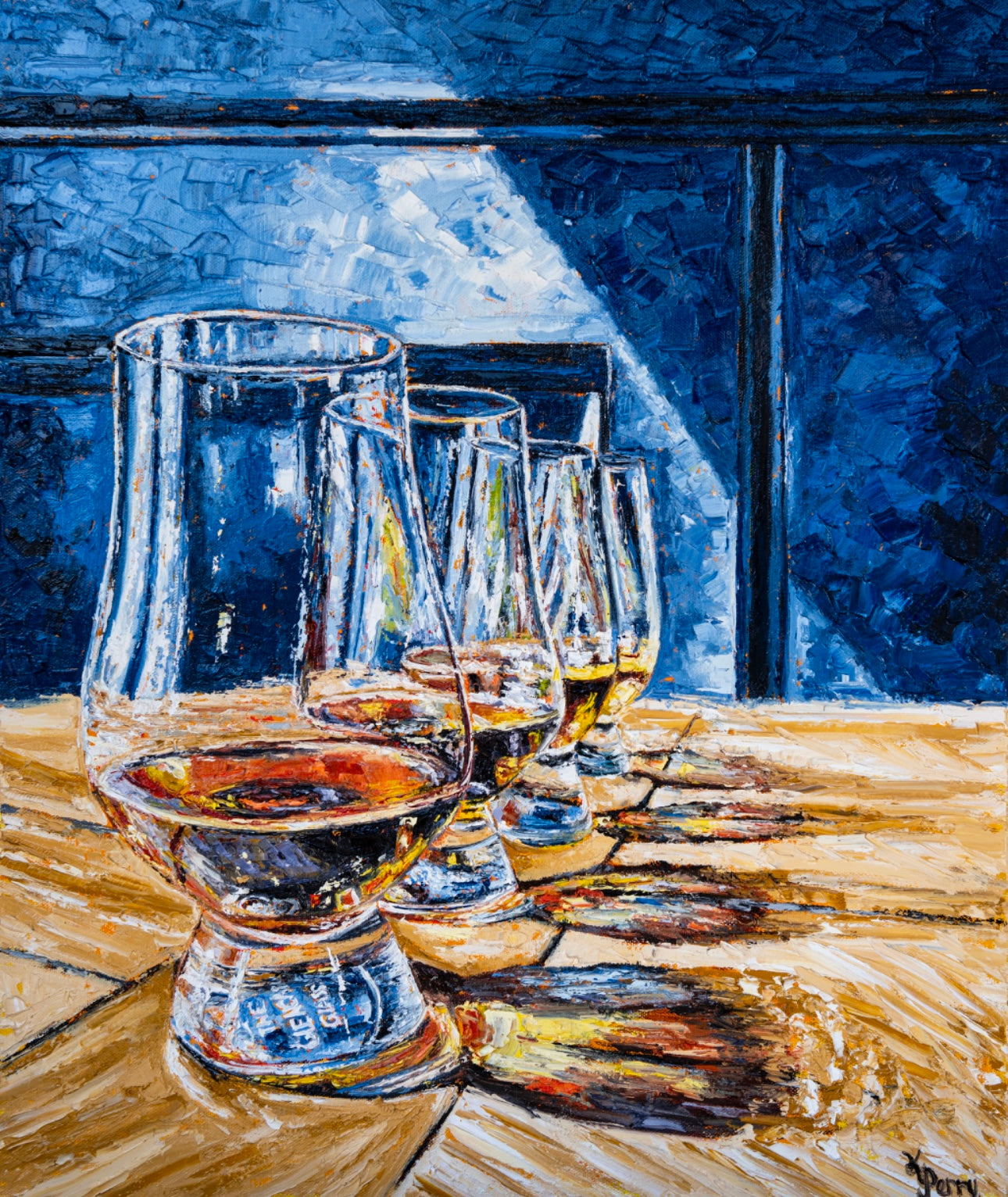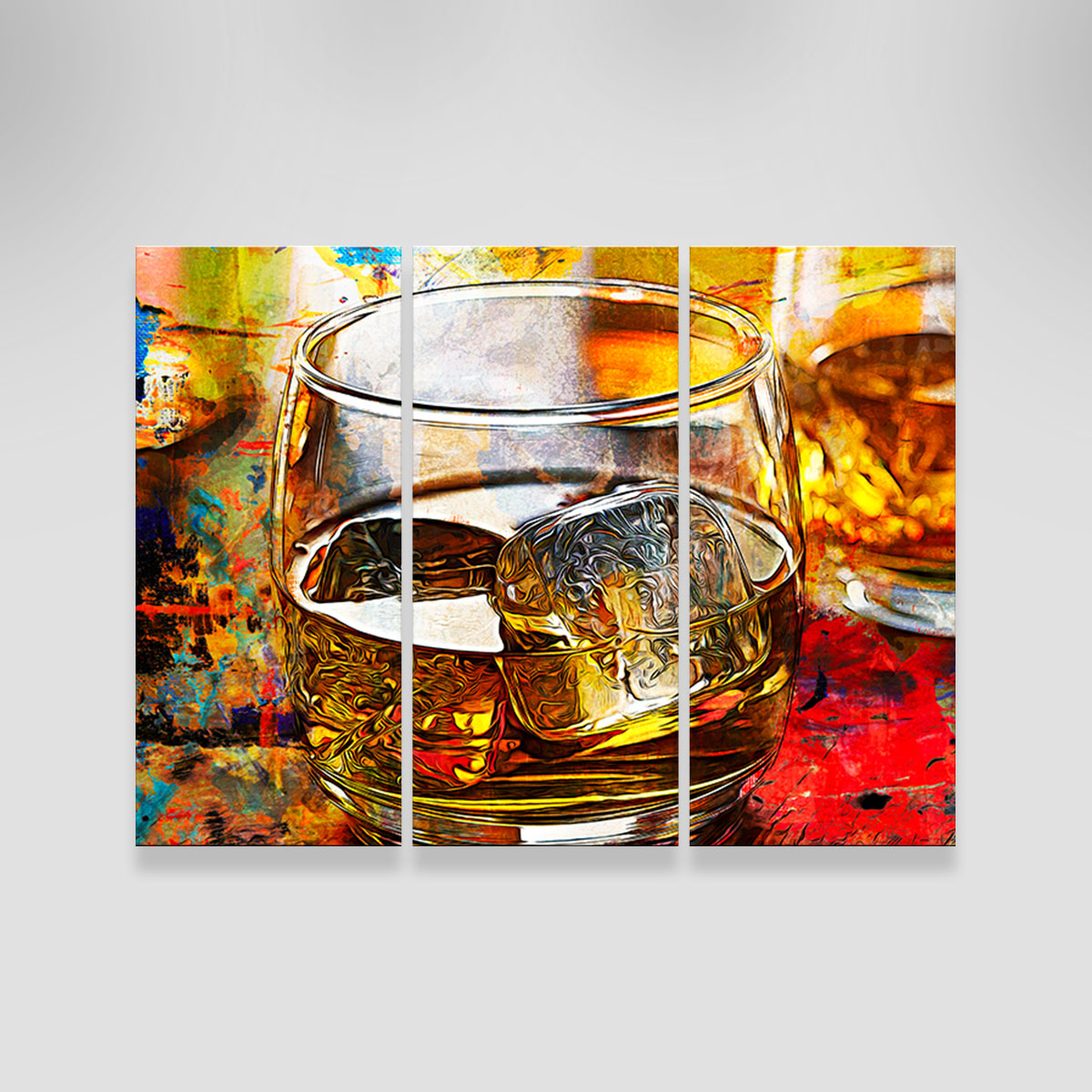Limited Edition: Discover Exclusive Bourbon Art Parts for Collectors
Limited Edition: Discover Exclusive Bourbon Art Parts for Collectors
Blog Article
The Importance of Whiskey Art in Celebrating Heritage and Workmanship in the Beverage Sector
The detailed partnership in between scotch art and the event of heritage and craftsmanship within the beverage sector can not be overemphasized. With thoughtfully developed containers and labels, whiskey brand names envelop their historical roots and the artisanal abilities that specify their production approaches.
The Historic Roots of Whiskey
At the heart of bourbon's appeal lies an abundant tapestry of historic roots that map back to old worlds. The origins of bourbon can be linked to the purification methods of the Sumerians and Babylonians around 2000 BCE, where early kinds of fermented grain beverages started to emerge. However, it remained in the Middle Ages that the art of purification developed considerably, specifically in Ireland and Scotland, causing the creation of bourbon as we understand it today.
The term "bourbon" itself obtains from the Gaelic word "uisce beatha," suggesting "water of life." This phrase emphasizes the cultural relevance of whiskey in Celtic societies, where it was often connected with routines, celebrations, and common bonding. By the 15th century, purification became an acknowledged craft within reclusive neighborhoods, leading the way for the establishment of legal distilleries.
As profession courses expanded, scotch's appeal expanded, transcending regional limits and recording the passion of connoisseurs worldwide. Limited Edition. This historic journey reflects not only the workmanship behind bourbon production however also its essential function in cultural and social contexts, noting it as a significant drink throughout history
Artistic Expression in Branding
Bourbon branding stands as a compelling junction of artistry and commerce, where visual identity plays a crucial role fit customer assumption. The looks of scotch tags, product packaging, and advertising products mirror not just the brand name's tale however likewise its core values and heritage. With creative expression, distilleries convey a narrative that resonates with customers, stimulating feelings and stimulating connections.
Making use of color, typography, and images in branding serves to differentiate items in a saturated market. For example, standard motifs might evoke a sense of credibility and craftsmanship, while modern-day designs can indicate development and forward-thinking. This tactical imaginative instructions enhances brand name acknowledgment and loyalty, enabling customers to build a personal connection with the bourbon they choose.
Furthermore, imaginative expression in branding frequently serves as a party of local heritage. Distilleries frequently incorporate regional icons or historic references into their designs, producing a local color that invites consumers to take part in a wider social experience. Inevitably, the virtuosity behind whiskey branding not only enhances visual appeal however likewise enhances the general story of the brand name, cultivating a much deeper admiration for the workmanship and heritage ingrained in each container.
Workmanship in Bottle Design
The artistry evident in whiskey branding extends beyond visual identity to encompass the workmanship associated with container layout. Each container offers as a vessel not simply for the spirit within, however likewise for the story it outlines its quality, beginning, and custom. The design process calls for thorough focus to information, as aspects such as material, closure, and form add dramatically to the general perception of the bourbon.
Workmanship in bottle layout involves picking high-grade glass that can improve the whiskey's shade and clarity, while likewise offering a responsive experience for the consumer. The shape of the bottle need to be both cosmetically attractive and useful, typically reflecting the heritage of the brand. Several distilleries choose one-of-a-kind shapes or printed logo designs that evoke a feeling of credibility and history.
In addition, the label style and typography play a crucial function in connecting the brand's narrative. Realism Art. A well-crafted bottle not only astounds the customer's eye but likewise enhances the brand's commitment to high quality and practice. This way, the craftsmanship of bottle layout becomes Web Site an important element of the bourbon experience, combining artistry with a profound regard for heritage
Social Significance of Scotch Art
Celebrating custom and workmanship, the social value of whiskey art transcends mere aesthetics, intertwining with the social and historical narratives of the regions from which it comes from. Each bottle serves as a canvas, illustrating the one-of-a-kind tales, mythology, and practices that have actually formed regional whiskey-making methods. The complex styles commonly show the heritage of the distillers, including icons and concepts that reverberate with the culture and values of their communities.

In enhancement, bourbon art plays a crucial duty in common gatherings and celebrations, working as a concrete link in between people and their shared experiences. By appreciating the creativity in whiskey packaging, customers cultivate a much deeper understanding and regard for the craft, ultimately enriching their satisfaction of the beverage itself.
Modern Trends in Scotch Discussion
In the last few years, the presentation of bourbon has developed to mirror contemporary preferences and patterns while still recognizing typical workmanship - Realism Art. Distilleries are progressively concentrating on visual aspects that boost the general alcohol consumption experience, bridging the space in between heritage and modernity
Cutting-edge container layouts have website here emerged, often integrating sustainable materials and creative labels that inform engaging tales. Many brand names now team up with neighborhood artists, instilling their products with one-of-a-kind visual expressions that reverberate with customers. In addition, limited-edition launches are commonly packaged in collectible containers, including worth and allure for aficionados.

Verdict
In conclusion, whiskey art serves as a vital conduit for sharing the heritage and craftsmanship integral in the drink market. Through complex branding, ingenious bottle designs, and culturally significant imaginative components, whiskey brands successfully honor their traditions and connect with customers.


Craftsmanship in container design entails choosing high-quality glass that can improve the scotch's color and clarity, while additionally supplying a tactile experience for the customer. In this method, the workmanship of container design comes to be a vital element of the bourbon experience, merging creativity with an extensive respect for heritage.
In conclusion, whiskey art offers as a vital channel for sharing the heritage and craftsmanship fundamental in Visit Your URL the drink sector.
Report this page